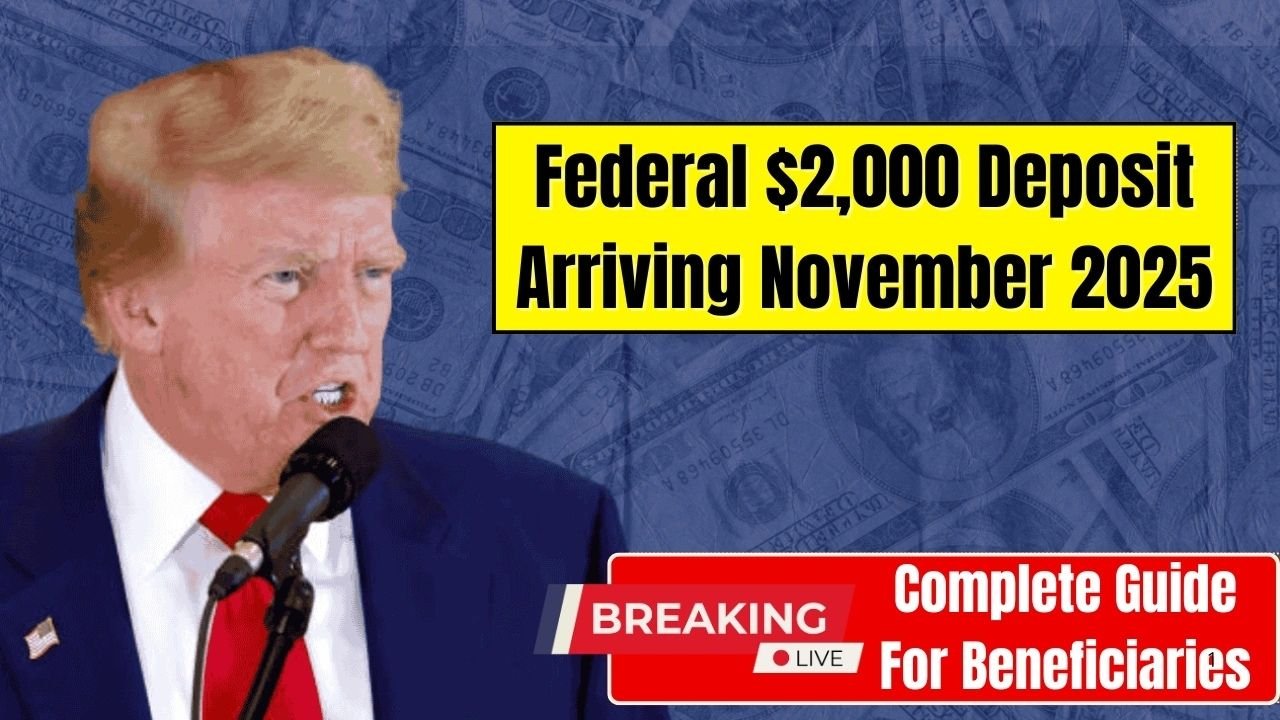Millions of Americans are searching for reliable information about the proposed Federal $2,000 Deposit that may roll out after 2025. With the cost of living still high, this idea has generated massive attention. However, the program is not approved yet, and several legal and political steps must happen before anything becomes official. This guide explains what the proposal includes, who may qualify, how payments could be delivered, and when money might realistically arrive.
What Is the Federal $2,000 Deposit?
The Federal $2,000 Deposit is a proposed one-time payment funded by money collected from U.S. tariffs on imported goods. Supporters describe it as a “tariff rebate,” meaning taxpayers would receive a portion of the revenue created by trade duties.
Quick Overview
| Topic | Details |
|---|---|
| Payment Type | One-time tariff rebate |
| Proposed Amount | $2,000 per eligible citizen |
| Status | Not approved; under review |
| Likely Eligibility | Middle- and lower-income households |
| Possible Income Limit | Around $100,000 per family |
| Delivery Methods | Direct deposit, check, tax rebate |
| Funding Source | National tariff revenue |
| Estimated Cost | $300B–$500B |
| Main Barrier | Supreme Court tariff review |
Why the Proposal Exists
Tariff revenue has grown in recent years. Some policymakers argue that since tariffs can increase consumer prices, a national rebate could help ease the burden. However, total tariff revenue is far smaller than the program’s cost, meaning new legislation or special authorization would be required.
Who May Qualify?
While no official rules exist yet, early discussions suggest:
- High-income households would be excluded
- Families earning below roughly $100,000 may qualify
- The focus would be on middle- and lower-income citizens
How Payments Could Be Delivered
If approved, payments would likely follow the same systems used for past federal relief programs.
Possible delivery methods:
- Direct deposit (fastest)
- Paper checks for those without bank info on file
- Tax-based credits for individuals outside the system
Actual delivery will depend on how quickly agencies can confirm eligibility and access tariff funds.
Major Legal Barrier: Supreme Court Review
A current Supreme Court case reviewing the legality of certain tariffs poses a major obstacle. If the Court rules against the government:
- Tariff revenue may be reduced
- Importers could receive refunds
- Funding for the $2,000 rebate may no longer be available
This ruling will heavily influence whether the proposal moves forward.
When Could Payments Actually Arrive?
Even if approved, experts predict the earliest timeline would be 2026 or later due to required legal reviews, administrative setup, and funding decisions. As of now, there is no official payment date.
What Americans Should Do Now
For accurate information, rely only on official federal sources such as the U.S. Treasury, the White House, and the IRS. These agencies will release verified details if the program progresses.
Frequently Asked Questions
1. Is the Federal $2,000 Deposit approved?
No. It is still a proposal under review.
2. Who is most likely to qualify?
Middle- and lower-income households under a possible $100,000 income limit.
3. How will the payment be sent?
Most likely through direct deposit, with checks or tax credits as backup options.
4. What could delay the program?
The Supreme Court tariff case is the biggest factor affecting the timeline.
5. When might payments start?
Most analysts estimate sometime in 2026 or later.
Conclusion
The Federal $2,000 Deposit is gaining attention, but it remains only a proposal facing major legal and financial challenges. While the payment could provide real relief for millions, its future depends on the Supreme Court, government approval, and tariff revenue availability. Stay alert for updates from official government sources to avoid misinformation.




